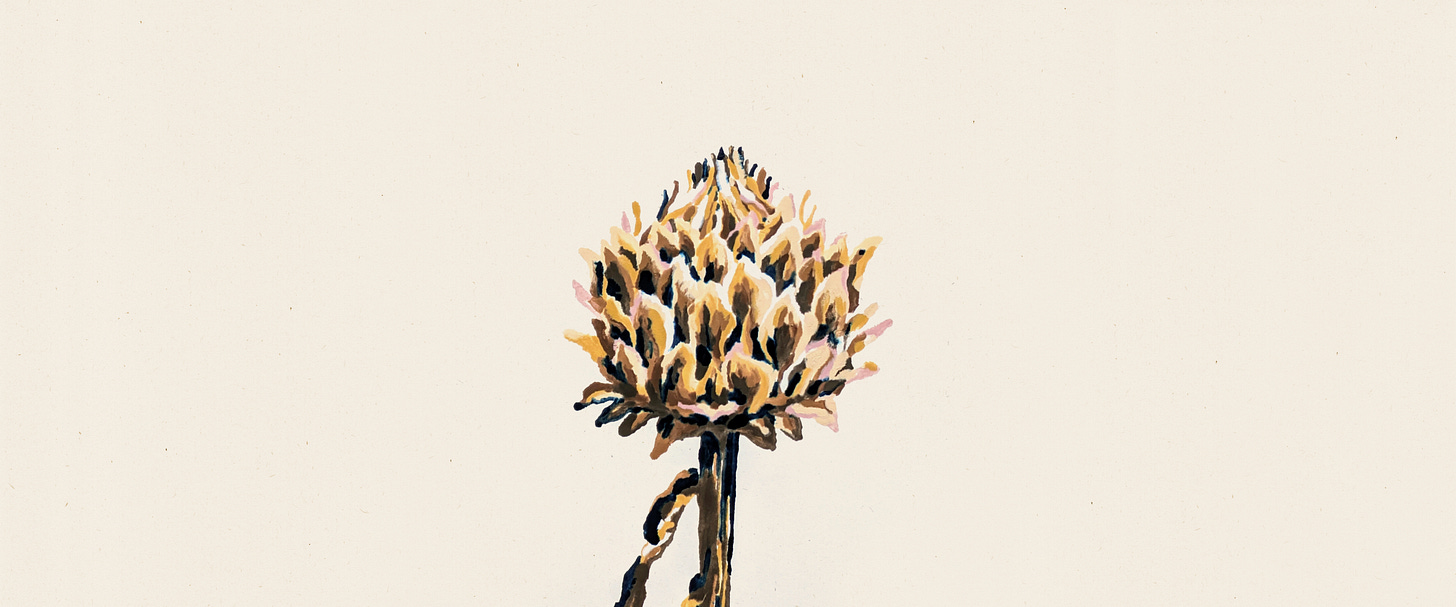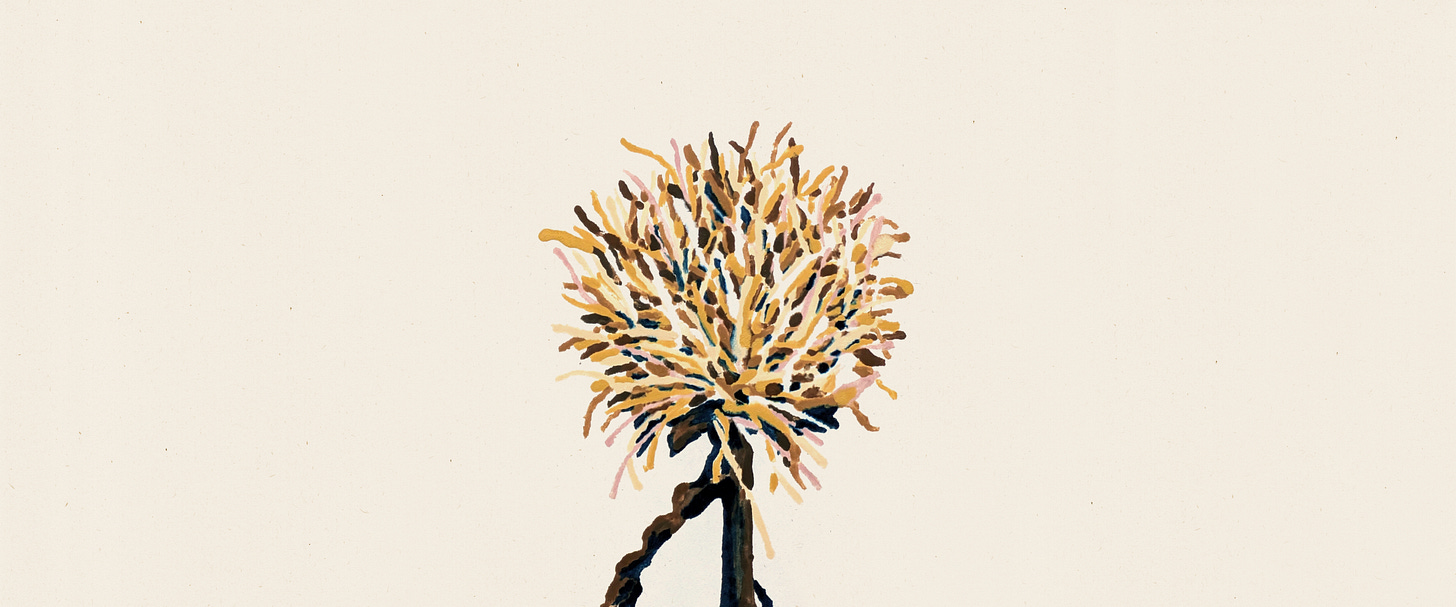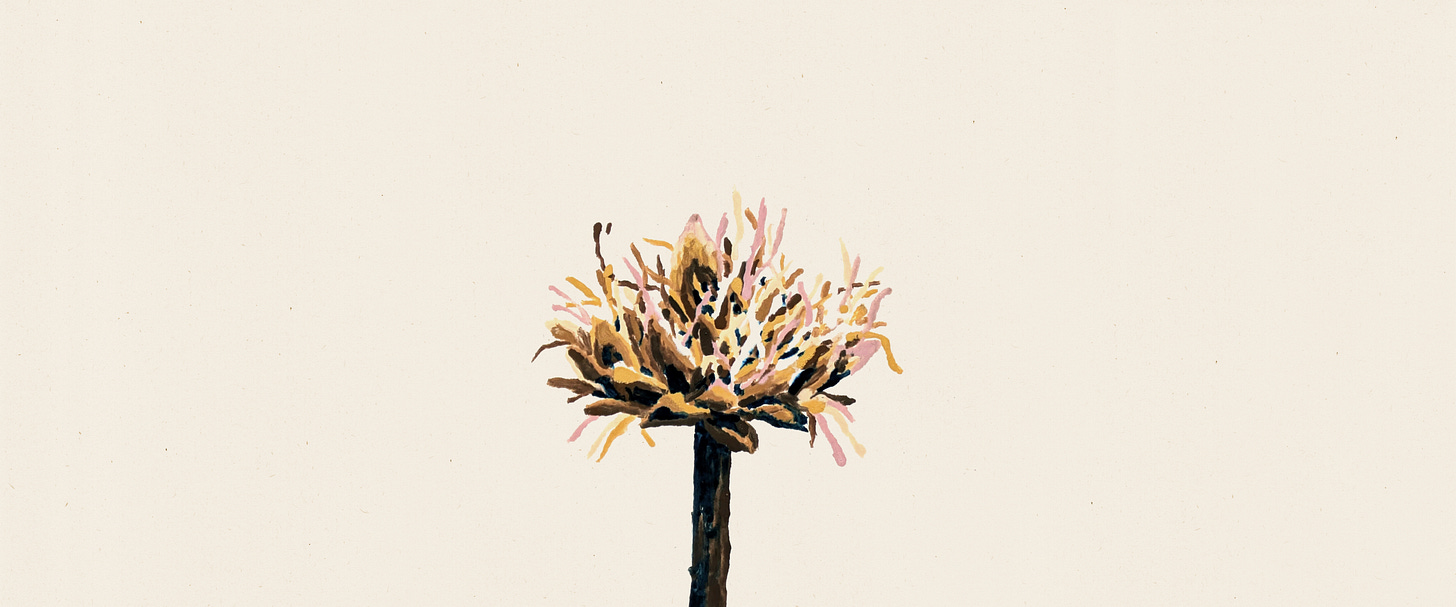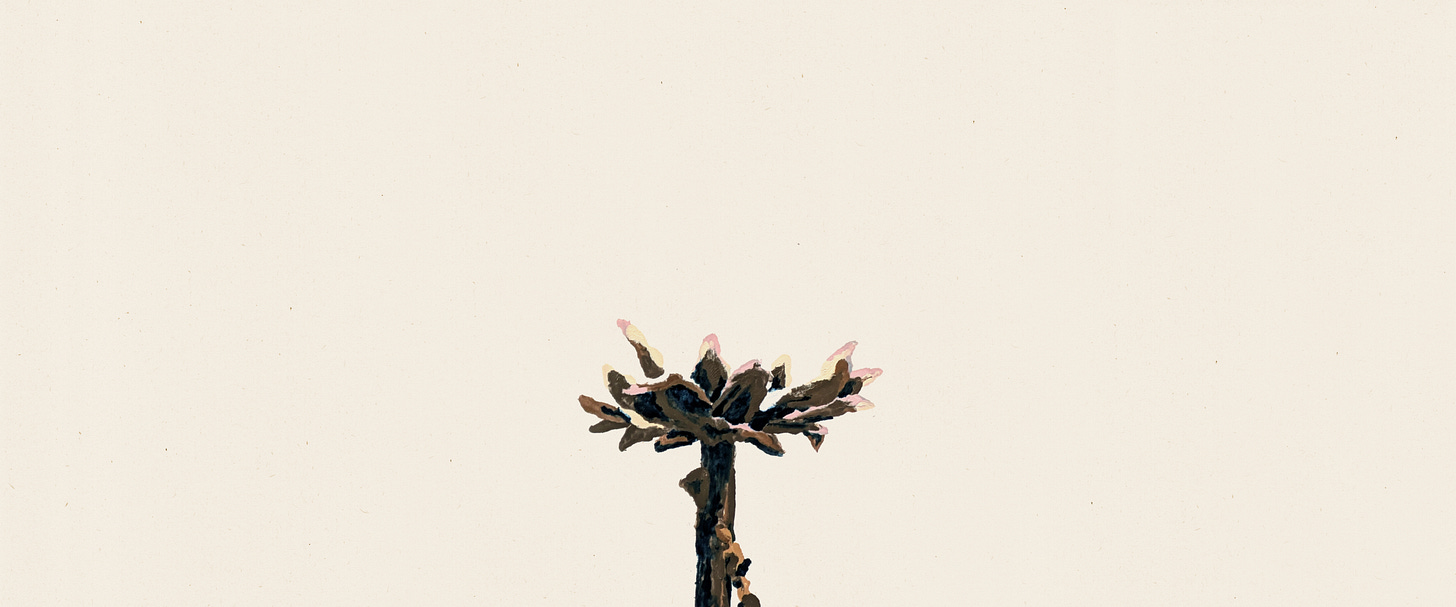Writing is difficult, and something that I would like to feel more comfortable doing. In much the same way that constraints ease the process of making pictures, I have been trying out working under time conditions to help focus and practice writing. Below is a 20 minute exercise from the allotment, with a little bit of editing and images made in the studio in response. Thanks for reading.
It’s Thursday 21st February. An unsettling warmth hangs in the air, a persistent wind coughing through the greenhouse. It must have been blowing for a while. Parts of the plot have been slightly rearranged since we were here a few days ago. A few errant pots about the place, netting unmoored from its brick anchors and collected offerings at the altar space tidied away. The wind does a good job of shaking loose the brittle or dead branches from the fruit trees and the oak, clearing the way for the promised new growth to unfold.
Unfolding it is. The snowdrops are on full display in the bed at the entrance to the plot, their delicate heads dipping, nodding and swaying in the breeze. Amongst them, miniature daffodil spires poke out, the first glimpses of tulip leaves stick out their green tongues and tiny crocus spikes push through the soil. I learnt on my RHS course that bulbs aren’t true roots, but an intricately packed bundle of swollen leaf bases. Curled up like a woodlouse, waiting for safer conditions to unfurl into the warmer air, through the softer ground.
The first chive shoots are also tentatively poking their fingers out. There’s something particularly exciting about this fairly modest return - signalling the return of the edible growing year. Similarly, the cultivated wild garlic shows its small green spears and the Babington's leeks send up their long stems. Pungent, lively flavours and a sharp, oniony tang in the air.
Also signalling brighter days are the buds of the peach tree. It’s planted in the greenhouse, protected from the deepest of the winter temperatures (which diminish each year) which helps give it a little headstart. The buds are a soft dove-grey, slightly orange at the base, glowing to a faint pink at the fringes, hinting at the vibrant, neon flowers to come in a few weeks. They are fuzzy, like the fruit to come, and edged with bright, chartreuse crowns of emergent spiky leaves. The tree is laden with buds, tiny, furry swellings along bony branches which are rusted red and slashed with cream-coloured lenticels.1
It’s hard not to get swept up in the anticipation. So much of what’s visible now is a glimpse into an uncertain future. The wind rattles the greenhouse side, to get my attention. “Don’t get ahead of yourself” it shouts out. The dark ochre stems of last year’s artichokes stagger gently, pillars supporting the fluffy seedheads that have fed the birds through the winter. They are more solid and stoic than the greenhouse’s current commotion. Sharp, silvered leaves cling to the stems, just barely. It’s hard to see them as anything but fireworks, frozen at the moment of explosion. At the base, silvery-blue new growth waits.
For more about this peach tree, I’d recommend my partner’s lessons below:








